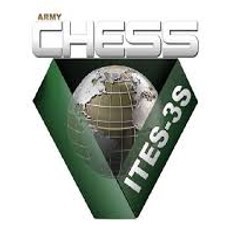Many of you know that I have also written a book, Mastering Business Chaos – Secrets to Being Indispensable and Becoming a Playmaker. The core theme of Mastering Business Chaos is recognizing and embracing the changing nature of work – work is increasingly separating into two distinct categories: 1) rules based work; and 2) knowledge and judgement based work.
From P. 161 of Mastering Business Chaos: “One of the most important patterns to recognize in business process is the distinction between rules based work, and knowledge and judgment based work. This is where we make some order out of chaos. Rules based work is mechanical in nature. Knowledge and judgment work requires making decisions based on experience, skill and wisdom. Most work activities have elements of both. Value is created by distilling the rules out of work activities to enable the rules to be performed mechanically (by people or by software) to free people to focus on making good decisions based on knowledge and judgment.”
Business Process Reengineering (BPR)
For the purpose of this post I’ll distill and highly simplify the concept of BPR to radical transformation of organizational effectiveness and operational efficiency via identifying and streamlining rules-based work via clearly defined rules-based procedures and/or automation of rules via technology.
Implicit in this definition of BPR, however, is to first eliminate (rather than automate) non value added work activities and/or procedural steps, dated and legacy business policies, etc. Traditionally, the focus of BPR was on streamlining and automating rules based work. However today, we also focus on streamlining and automating knowledge and judgment based work as well using AI, big data, machine learning, etc.
Digital Transformation
In an earlier post, “Digital Transformation - an Existential Threat to Technological Laggards,” I defined digital transformation as “leveraging information technology to disrupt traditional industry models and business practices to deliver exceptional customer and business value and create sustainable competitive advantage.” I encourage you to read the post to provide additional context to glean the most value from this post.
Let’s unpack that definition a bit. The first part of the definition “leveraging information technology to disrupt traditional industry models and business practices” focuses on technology. And, yes, by definition “digital” implies leveraging technology. The take away here is to view technology as an enabler of digital transformation. However, the secret sauce of digital transformation is in the second part of the definition – “to deliver exceptional customer and business value and create sustainable competitive advantage.”
The Holy Grail of Digital Transformation
Implicit in and essential to developing a digital transformation strategy is to embrace agility – the ability to rapidly identify and respond to changes in customer needs, requirements and expectations in terms of products, services, support and level and type of engagement with customers. The Holy Grail of digital transformation is to enable highly personalized customer relationships.
In other words, digital transformation utilizes the BPR concepts of radical transformation via separating rules based work from knowledge and judgment based work – but with a razor focus on radically rethinking and redesigning customer engagement (marketing, sales, customer service, etc.) strategies and supporting business processes.
So, the answers to the questions posed at the beginning of the post are indeed “yes!”
I am frequently asked the question - “What is the difference between Digital Transformation and Business Process Reengineering (BPR)? Are they synonyms – really just two words for the same thing? Are they fundamentally different concepts? Is one a subset of the other? The short answer is “yes”, but that would be dodging the underlying complexity and nuances of the distinctions between BPR and Digital Transformation. And, if you have been reading my posts for a while, you know that analyzing complexity and nuances are core to my discussions.
Subscribe to my blog | Visit our Knowledge Hub
Visit my YouTube channel | Connect with me on LinkedIn
Check out our Business Analysis Training Courses and Consulting Services




















